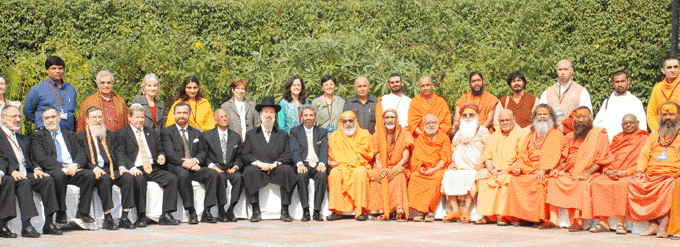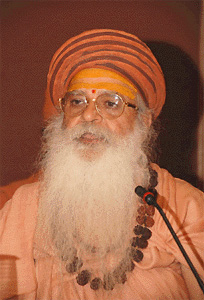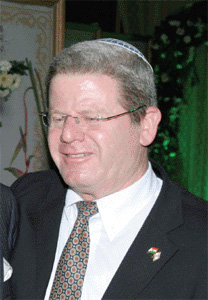Similarities Between Hindu and Jewish Traditions
BY: SUN STAFF

May 15, CANADA (SUN) — Following is an excerpt from the report produced by the first Hindu-Jewish Leadership
Summit, held last year in New Delhi. The Summit was an initiative of the World Council of Religious Leaders, in partnership with the Chief Rabbinate of Israel and the Hindu Dharma Acharya Sabha. In this exchange, HH Mahamandaleswar Sri Swami Gurusharananandaji Karsni Peeth of Mathur offers an overview of the Vedic tradition, which is followed by a response from Mr. Oded Weiner, Director General of the Rabbinate of Israel.
Similarities between Our Traditions
His Holiness Mahamandaleswar Sri Swami Gurusharananandaji Karsni Peeth, Mathura

Shalom to acharyas, and revered guests. I shall speak on similarities in our traditions. Both our traditions have given birth to many other religions: Hinduism has given birth to Buddhism and Jainism, and, similarly Judaism is the mother of Christianity and Islam.
We have both experienced the persecution of intolerant rulers. We also have been subject to the holocaust during colonial times.
Both our religions are revealed. Hinduism does not have a beginning. It was never started. Dharma was always there. The Vedas are not books, they are revealed facts by Rishis: Rsayastu mantradrstarah, not mantra-kartarah. Rishis are the seers of the mantras, not its authors. Vedas are revealed. Similarly Moses did not create the Holy Books. They were revealed. God is the source of both the Jewish and Hindu traditions. Moses did not create the religion. Similarly in our tradition we say even Rama or Krsna didn’t create the religion. We have four Vedas, you have five Holy Books. We have smritis, you have midrash.
Both of us remove shoes at the temple. We take a ritual bath before special rites. The outer purity is needed to cultivate inner purity.
You keep Kosher, we have what is called “achara”--both refer to strict codes about internal and external purity. We are pure in our food habits. We do not mix certain types of food, or eat old food. We purify ourselves before going to the temple. During the menstrual period, both Jewish and Hindu women abstain from worship.
We have lunar calendars in both traditions. The number of years in our calendar is the same. For marriages and other auspicious events, we see different days. Both perform marriages under canopies. Some of the rites are similar.
We also have corresponding festivals. In the Jewish tradition, you have Yom Kippur, and we have Navaratri; we fast and pray and do special prayers at the time. The festivals of Purim and Holi, coming in the springtime, signify triumph of good over evil are in both traditions. When we do a blessing, we use rice as the symbol of fertility. Both, Hindus and Jews, do penance and fasting. In the past, it is said that Jews used to rub ash on the body to purify themselves. We have two important rivers: Jordan and Ganga.
Finally, the essence of both traditions is “Atmanah pratikulani paresham na samacharet,” do not do unto others what you do not want to have done to you. Om.
Response Mr. Oded Weiner Director General of the Rabbinate of Israel

The Revered Swami has made a number of pertinent points about the similarities between our traditions, which are very exciting to hear. I want to reiterate that Moses and Abraham did not found our religion; they were only agents of the divine. With regard to purity, you will be familiar with the Jewish tradition of purification called the Mikvah, and there are many Jews who use this ablution daily for purification.
It is also our custom to throw rice on the bride and groom in the expectation that they will be fecund and productive. There is even a custom of putting ashes on the forehead of the groom to remember the destruction of the temple, and to pray for its reconstruction.
Therefore, it is not surprising that there is little difference between the words “Hodim,” Hindus, and Yehodim, Jews. The words are nearly identical, separated just by the letter “yod,” the “y”. This is significant in itself because the “yod” is the tiniest letter in the Hebrew alphabet. These two letters, “yod” and “he,” spell God in the Hebrew language. It is all really quite profound.
